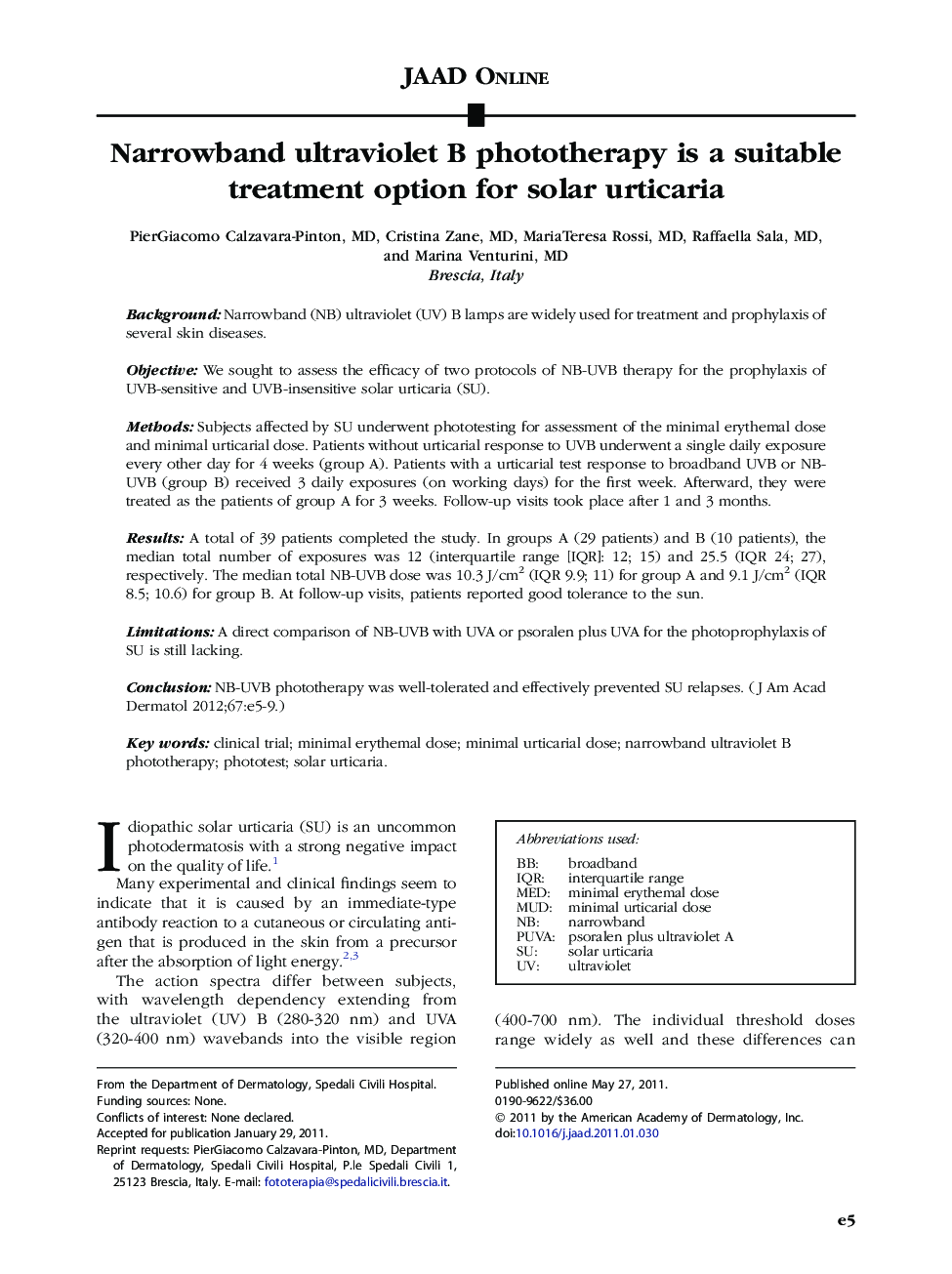| Article ID | Journal | Published Year | Pages | File Type |
|---|---|---|---|---|
| 3206115 | Journal of the American Academy of Dermatology | 2012 | 5 Pages |
BackgroundNarrowband (NB) ultraviolet (UV) B lamps are widely used for treatment and prophylaxis of several skin diseases.ObjectiveWe sought to assess the efficacy of two protocols of NB-UVB therapy for the prophylaxis of UVB-sensitive and UVB-insensitive solar urticaria (SU).MethodsSubjects affected by SU underwent phototesting for assessment of the minimal erythemal dose and minimal urticarial dose. Patients without urticarial response to UVB underwent a single daily exposure every other day for 4 weeks (group A). Patients with a urticarial test response to broadband UVB or NB-UVB (group B) received 3 daily exposures (on working days) for the first week. Afterward, they were treated as the patients of group A for 3 weeks. Follow-up visits took place after 1 and 3 months.ResultsA total of 39 patients completed the study. In groups A (29 patients) and B (10 patients), the median total number of exposures was 12 (interquartile range [IQR]: 12; 15) and 25.5 (IQR 24; 27), respectively. The median total NB-UVB dose was 10.3 J/cm2 (IQR 9.9; 11) for group A and 9.1 J/cm2 (IQR 8.5; 10.6) for group B. At follow-up visits, patients reported good tolerance to the sun.LimitationsA direct comparison of NB-UVB with UVA or psoralen plus UVA for the photoprophylaxis of SU is still lacking.ConclusionNB-UVB phototherapy was well-tolerated and effectively prevented SU relapses.
